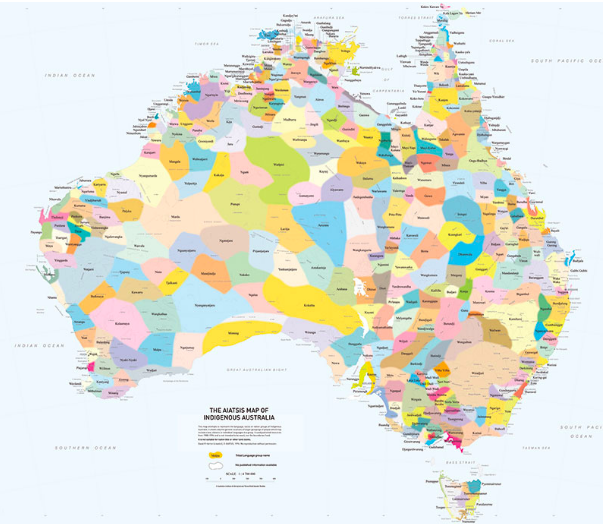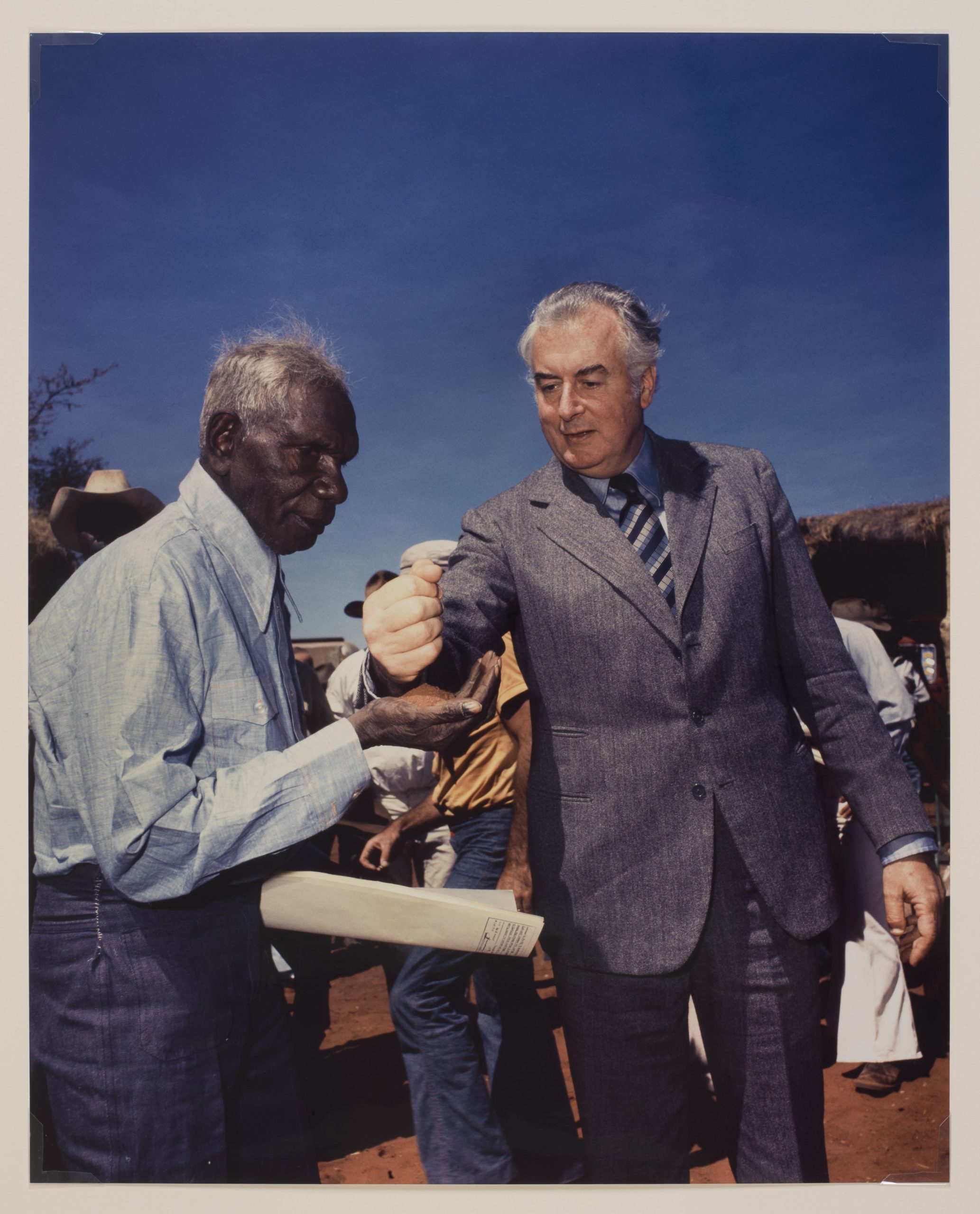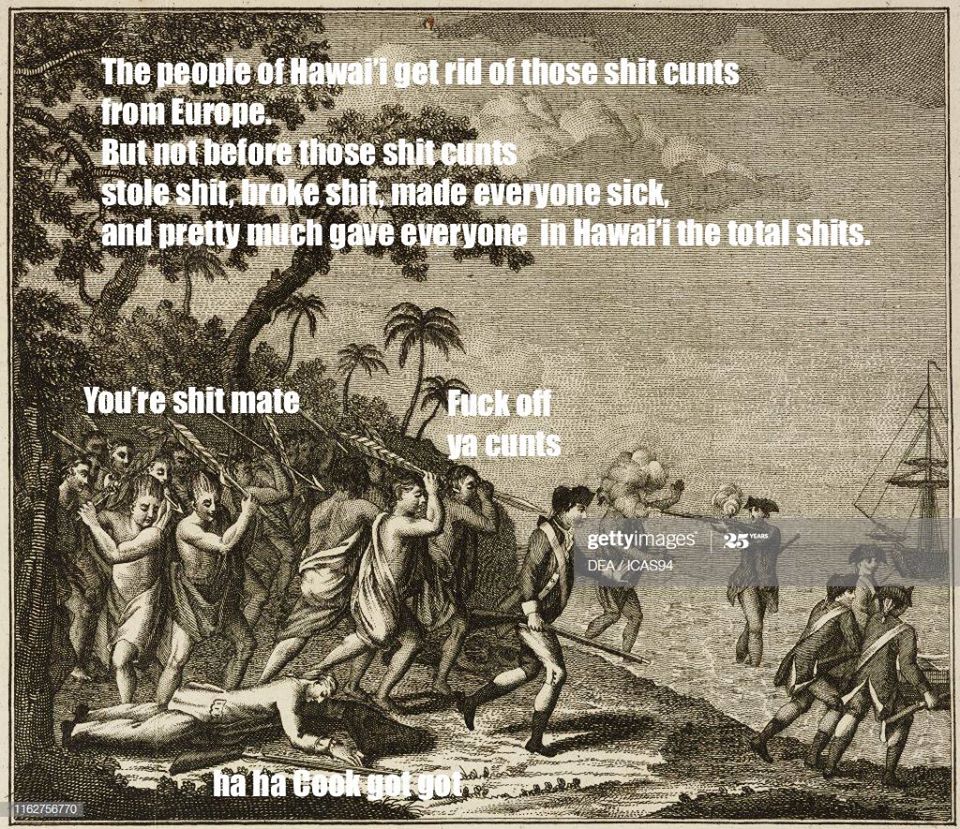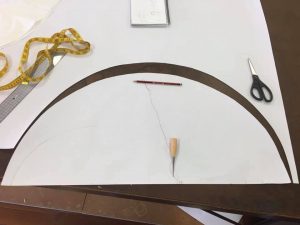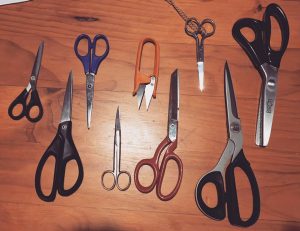They are no ‘outraged’ because they are not ‘shocked’. There is nothing shocking about racist violence perpetrated by police because it is normalised. It is seen as legitimate violence. It is this legitimate violence that was not only used to steal the country and assert white dominance but also maintain it through the oppression of Aboriginal people.
source
Category Archives: learning
Landrights in Western Australia and the Yindjibarndi people
Some very good news.
The High Court has upheld the Yindjibarndi people’s native title rights to their land.
Fortescue Metals Group applied to appeal these rights, and got a big ‘nope’ from the High Court.
The Yindjibarndi people live in what has been called Western Australia since invasion, but has been black country for 40 000 years. If you look it up on this great map, you’ll find them in blue on the far left of the continent, above the most eastern most bit.
You can read about the Yindjibarndi languages here, on this epic good map.
Languages are important, because you can trace who lived where by the languages they speak. A people will share some linguistic elements (and languages) with neighbouring people.
Language is culture, and the number of people speaking a language can tell you about that people’s history.
The Stolen Generations interrupted the transfer of language and culture between generations in many areas. Reconciliation Week is supposed to be (in part) about making amends for the Stolen Generation.
You cannot understand Australian history without reading the Bringing Them Home (1997) report.
Please note: this Report warrants a Content Warning for sexual violence, neglect, persons who are deceased, and so on. If you are an Australian, particularly if you are not a Aboriginal or Torres Strait islander Australian, you should try to read this Report.
Useful things to think about in regards to native title today:
- water rights (who owns them, who can buy or sell them);
- mining (who has access to land to mine);
- continuous occupation of land (and proof thereof, including rock paintings and burial grounds).
Note: native title is determined by the High Court. There are 7 High Court judges, 3 are women, none are Aboriginal or Torres Strait Islander. It’s worth noting that one of them, Justice Virginia Bell was a volunteer at the Redfern Legal Centre in the 70s, a centre that provided legal support for the 1978 Mardi Gras protesters (the first mardi gras march), for local Aboriginal community members, and other civil rights activists.
Read more about the Redfern Legal Centre here.
Mervyn Bishop and Vincent Lingiari
I like to think of Frankie Manning’s birthday as the day we white people kick off a week of deep diving into supporting black civil rights. Here in Australia, it’s reconciliation week. This land is home to the oldest culture on earth. And some of the most persistent and terrifying racism.
If you don’t have the stomach for reading about the horrors of black history here and in the US, focus on digging out and supporting black artists, thinkers, activists, workers. Be the person who clears a space so they can stand. Still your voice so they can speak.
This iconic image is by aboriginal photographer Mervyn Bishop. He composed and shot the image.
…on 16 August 1975, he covered a historical event at Wattie Creek in the Northern Territory. This significant moment in Australian history followed a nine-year strike over the working conditions and request for traditional lands to be returned to the Gurindji people. This photograph captures Prime Minister Gough Whitlam pouring soil into the hand of Aboriginal rights activist, Vincent Lingiari on the occasion of the successful passing of the revolutionary act of parliament.
(source)
-> land rights + labour rights + black civil rights
Useful topics to follow up:
– Wave Hill Walk-Off (1966-1975)
– Gurindji people
– Vincent Lingiari
– Aboriginal Land Rights (Northern Territory) Act (1976)
Sorry Day
Today is world lindy hop day and Frankie Manning’s birthday. But it’s also Sorry Day.
For me, Sorry Day is the more important occasion. But I think that Frankie would be down with that: apologise, remember the past, move forward with hope and good will.
[edit 10 minutes later]…maybe do a bit more than ‘move forward with hope and good will.’ Me, I’m adding ‘Do what you can, when you can. Because life is short, and we should take care of each other. And take care of the music.[/]
Cook: crap
So, after Kate asked for an actual source for James Cook raping people, I’ve been doing some ‘light’ research trying to find the original twitter thread where I read about this.
This thread was between a few first nations women (Australia, Hawai’i, NZ, etc), and they dropped some sweet links.
Anyway, I can’t find the original twitter thread (😭) but I have read a lot of interesting things.
Key was that Cook and his crews knowingly carried disease (TB, syphilis, gonorrhea, and lots of other lovely things) to the people of the pacific region (NZ, Hawai’i, Australia, Tahiti, etc). They knew they were sick, but they still had sex with local people. They also stole stuff, beat people, raped people, and were generally shitty guests. Eventually the people of Hawai’i had jack of Cook and his bullshit, and killed his arse.
There are lots of primary sources (journals, stories, drawings, paintings, etc) about this. It wasn’t a secret.
– Cook was a bad person. He did three major voyages, getting progressively more violent and aggressive, and eventually getting killed on the final voyage (12 Feb 1779, Hawai’i).
– His violence was expressed through increasingly violent (and quite horrific) ‘punishments’ for indigenous people who broke his ‘rules’, and for his own crew.
– His crews were allowed to interact with various villages as they travelled, including sexual relationships.
– Cook declared Australia ‘terra nullis’. He knew that people were living here, but because he didn’t count anyone who wasn’t European as a human, he decided that no ‘people’ lived in Australia.
– The people of Hawai’i (and other places) got increasingly shitty with Cook and his crew. They’d pass through their harbours to restock water and food, and to do some R&R. At first the Hawai’ian people were ‘yeah, ok’ and because women were considered sexually and socially autonomous people, they would have a root with the visitors. For fun. And also for economic gain. Sex work (giving sex in return for things like european goods) was culturally ok at the time. But after a while Cook and his mates became less fun. And they were riddled with disease.
– Lilikalā Kameʻeleihiwa (a scholar from Hawai’i) explains that Cook and his men brought TB and STIs like syphilis to the people of Hawai’i. Who were NOT impressed by these dirty europeans. Cook also had sex with local women.
– Eventually Cook got got by the Hawai’ian people for trying to kidnap the aliʻi nui (king/god/leader) Kalaniʻōpuʻu. He and his marines laid hands on Kalaniʻōpuʻu, and tried to drag him away, in punishment for the theft of a jolly boat.
The especially bad bit of this was that Cook disrespected the aliʻi nui body and spiritual/god status of Kalaniʻōpuʻu by laying hands on him.
In sum, Cook did not consider people of colour ‘human’, and if you don’t consider someone human, you don’t believe they have bodily autonomy, and therefore cannot give consent to sex. By this logic, if they can’t give or not give consent, they can’t be raped.
This sort of logic isn’t new, and I’m not the first person to draw these connections; there’s other (better) research about this stuff. But we can see these sorts of patterns of behaviour today in sexual offenders: men who regard women, girls, and children as less human and less important than their own desires, and do not respect their bodily autonomy*.
But I haven’t yet found specific primary sources detailing Cook’s sexual assaults. Mostly because I couldn’t read any more about him without feeling sick.
Here are some sources:
– Catherine ‘Imaikalani Ulep, ‘Women’s Exchanges: The Sex Trade and Cloth In Early Nineteenth-Century Hawai‘i’
(https://scholarspace.manoa.hawaii.edu/bitstream/10125/62478/2017-05-ma-ulep.pdf?fbclid=IwAR3YmGPe8ZC7YZ7Rm6h6oFw5BLO4WgmhHnVWjfD_wiRck7-3x02FaNo2pZE)
– Kerri A. Inglis, ‘Kōkua, Mana, and Mālama ‘Āina: Exploring concepts of health, disease, and medicine in 19th Century Hawai’i’
(http://ulukau.org/elib/cgi-bin/library?e=d-0hulili05-000Sec–11en-50-20-header-book–1-010escapewin&a=d&d=D0.18&toc=0)
– Accounts of disease in Cook’s crew, and on the population of Hawai’i before and after his visits are plentiful. You can find zillions with a google search, from his crew’s journals to oral histories from Hawai’i people and so on. It’s not a contested idea; it’s a fact.
*’bodily autonomy’ is the right to make choices about your own body, what it does, how it looks, how it works, and who gets to touch it. It’s a useful phrase and concept for talking about sex, reproduction, imprisonment, and health. It’s also a powerful phrase for talking about children and their rights.
Hoarding during a pandemic
Normal shopping isn’t hoarding.
Hoarding is an obsessive compulsive behaviour and a response to anxiety. The best way to decide whether what you’re doing is hoarding or just routine, is to sit and imagine not buying those 10 loaves of bread you have in your trolley. If it causes you real distress (ie panic attack, crying, etc) it’s hoarding.
Thing is, in these times we’re all dealing with real anxiety, and most people don’t know how to manage it. The idea of buying and having lots of things is soothing for people trained to find pleasure in shopping. So it’s only to be expected. I imagine a lot people buying ‘extra’ plan to share it with family or legit keep it for an unpredictable emergency. They feel safer with a stockpile.
A lot of white m/c australians have never had to deal with real shortages, so they’re stocking up on the wrong things. Here in Ashfield where we’re from Nepal, China, Taiwan, India, Pakistan, Poland, etc, a lot of people know how to deal with scarcity, so they’re always stocked up, and with the right things. Rice, preserved food, spices to give flavour to plain food. And they don’t waste food.
Hoarding is not good, but i see it as a bellweather for community feeling.
Here our supermarkets (preserve of m/c people) are a mess, but our Asian grocers are not.
So, because you can’t do anything about other people, check yourself. Be mindful of your purchasing. One extra loaf is bread is fine (esp if you freeze any extra). But be aware: if you get to three or four, check your general anxiety and wellbeing. Buying excessive amounts will tell you how your anxiety levels are.
But don’t judge yourself harshly for being a sensible housekeeper.
Time to stop dancing, Sydney
Time to cancel your partner dance classes, Sydney. Gotta flatten that curve.
I know. I’m usually all in favour of curves. The more the better. But not this time.
Our government is only enforcing a ban on gatherings of 500 or more people at the moment. But they’re normal people, not lindy hoppers or (god forbid) balboa and blues dancers. Who don’t seem to recognise personal space boundaries.
As partner dancers we touch a lot more than non-dancing crowds.
We are generally pretty good at sharing germs, but in this moment, we’re going to be too good. Let’s aim to be rubbish at sharing germs. Aim low, Sydney, aim low.
COVID-19 is spread through ‘respiratory droplets’ (drops of wet stuff from our mouths and noses), and through physical contact. When we dance, we often have our mouths open as we laugh and smile, we sweat a lot, we are constantly touching our faces, wiping off sweat, etc etc. Then we wipe those droplets into our orifices, and all over our environment. We blow them onto chairs and tables and sinks and phones and bags and dance shoes. And then it can live there for a few days.
Soz, but solo jazz will not stop us germing all over each other. Solo jazzers are epic respiratory droplet distributors.
Dancing one metre or even two metres apart isn’t going to cut it. Yes, that snot goob flew out of your nose and onto a chair or door handle or table. And someone else will touch it. Or that time you laughed, and threw your head back? You sprayed mouth goobs all over the room. And that sweaty towel you rubbed over your eyes and mouth and nose and face? You’ve just left it on the table. Or your bag. And now you’re touching someone’s hand. EEEEk. Even in a time of un-pandemic, that’s gross.
The best way to prevent the spread of COVID-19 is to avoid transmission through direct contact. No touchy.
And no blowing respiratory droplets onto other people.
Don’t panic!
Here are the important rules:
- Wash your hands a lot. With soap and water, for 20 seconds.
- Practice social distancing.
- If you’ve just come home from overseas, you have to quarantine yourself at home for 14 days.
- Cover your mouth when you cough or sneeze, and then wash your hand immediately. With soap and water
- Stay in contact with your dance buddies using the Internet.
What is social distancing?
Social distancing is an effective measure, but it is recognised that it cannot be practised in all situations and the aim is to generally reduce potential for transmission.
While practising social distancing, people can travel to work (including public transport). For non-essential activities outside the workplace or attendance at schools, universities and childcare – social distancing includes:
– avoiding crowds and mass gatherings where it is difficult to keep the appropriate distance away from others
THIS ONE: THIS IS US, DANCERS:
– avoiding small gatherings in enclosed spaces, for example family celebrations
> WE ARE GERMY. LIKE FAMILY IN AN ENCLOSED SPACE.
THIS IS ALSO US!
– attempting to keep a distance of 1.5 metres between themselves and other people where possible, for example when they are out and about in public place.
>GOOD LUCK KEEPING 1.5M BETWEEN YOU AND A BALBOA DANCER, FREND.
AND US AGAIN!!
– avoiding shaking hands, hugging, or kissing other people
> JUST TRY NOT TO SHAKE HANDS IWHT A LINDY HOPPER. I DARE YOU.
– avoiding visiting vulnerable people, such as those in aged care facilities or hospitals, infants, or people with compromised immune systems due to illness or medical treatment.
Teachers:
Don’t freak about losing your students or your venue or any of that stuff.
You will lose money. That’s going to happen.
BUT
You can keep in contact with your students using fb groups, and by starting a ‘community’ (discussion on your fb page).
Keep posting on your fb page, and engage people in conversation online.
Post little videos of yourself talking about dance (keep it short!) and your tips for practicing at home.
AND
Prepare for your triumphant return by rebooting some aspects of your business (ever wanted to rejig your teaching strategies? Now’s the time). Rethink your business plan. Start developing a lovely new promotional strategy.
MOST OF ALL
Keep in contact with other teachers and organisers, and get some virtual hand holding and support. Sydney is a ridiculously friendly scene, considering how many different schools and businesses our dance community has. Heck, we’re pretty much the only city in the world that could develop a shared response to sexual assault and harassment. Remember that time in 2016 we ran a replacement exchange when SSF had a stumble? We put together an ENTIRE weekend of parties with a week’s notice. And it was GREAT.
Pattern drafting school report: final class.
My doods, i used like ten metres of paper today. But first i drew this perfect half circle with a piece of string, a pencil (H), and an awl.
Then I drew another, off-centre half circle inside it, for which i calculated the radius using MATHS.
It took me nearly thirty years, but i totally USED that high school education.
Pattern drafting school report
So apparently lindy hoppers don’t want to hear a blow-by-blow account of how to pivot a bust dart into the shoulder seam then convert it into a styleline. Not even when you open with the fact that you get two square metres of blank paper, a sharp pencil, an eraser, two types of rulers, scissors, and masking tape and then go fully sick with some geometry.
WhatEVER, dancers.

